Salut, Habr.
Un domaine assez intéressant des «statistiques appliquées» et de la PNL (traitement des langues naturelles et pas du tout ce que beaucoup pensent maintenant) est l'analyse de texte. Cette direction est apparue bien avant l'informatique, et avait un but tout à fait pratique: déterminer l'auteur de tel ou tel texte. Avec l'aide d'un PC, cependant, c'est beaucoup plus facile et plus pratique, et les résultats sont assez intéressants. Voyons quels modèles peuvent être identifiés à l'aide d'un code Python très simple.
Pour ceux qui sont intéressés, la suite sous la coupe.
L'histoire
L'une des premières tâches pratiques a été de déterminer la paternité des textes politiques The Federalist Papers , écrits aux États-Unis dans les années 1780. Leurs auteurs étaient plusieurs personnes, mais qui est qui, c'était complètement inconnu. La première approche de la construction de la courbe de distribution de la longueur des mots a été reprise en 1851 , et on peut imaginer combien de travail cela représentait. Maintenant, grâce à Dieu, tout est plus facile. Je vais considérer la méthode d'analyse la plus simple utilisant des calculs simples et le package Natural Language Toolkit , qui, avec matplotlib, vous permet d'obtenir des résultats intéressants en quelques lignes de code. Nous verrons comment tout cela peut être visualisé et quels modèles peuvent être vus.
Les personnes intéressées par les résultats peuvent sauter le chapitre "code".
Le code
. :
s = """
, . ,
: ?"""
nltk:
import nltk
nltk.data.find('tokenizers/punkt')
tokens = nltk.word_tokenize(s)
tokens :
['', '', '', '', '', '', '', '', '',
'', '', '', '', ',', '', ...]
, :
import string
remove_punctuation = str.maketrans('', '', string.punctuation)
tokens_ = [x for x in [t.translate(remove_punctuation).lower() for t in tokens] if len(x) > 0]
: . .
text = nltk.Text(tokens_)
lexical_diversity = (len(set(text)) / len(text)) * 100
96.6%.
:
words = set(tokens_)
word_chars = [len(word) for word in words]
mean_word_len = sum(word_chars) / float(len(word_chars))
set(tokens_) , , . 4.86.
sent_tokenize NLTK, , , .
import numpy as np
sentences = nltk.sent_tokenize(s)
sentence_word_length = [len(sent.split()) for sent in sentences]
mean_sentence_len = np.mean(sentence_word_length)
15 .
- . , , ("", ""). 1000 :
fdist = nltk.probability.FreqDist(nltk.Text(tokens))
commas_per_thousand = (fdist[","] * 1000) / fdist.N()
57.14 1000 .
, - .
import codecs
try:
doc = codecs.open(file_name, 'r', 'cp1251').read()
except:
doc = codecs.open(file_name, 'r', 'utf-8').read()
, . , -, 1251. copy-paste , UTF-8. 1251, UTF-8, .
. , . 4 , Lib.ru. , .
- :
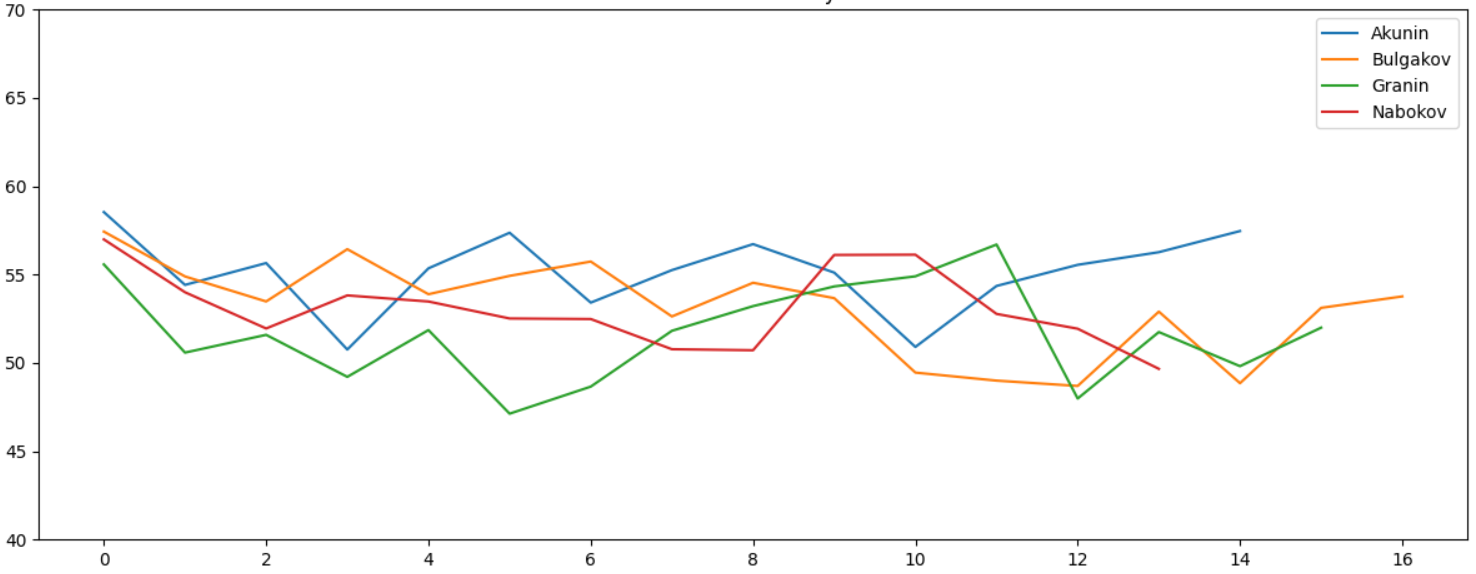
, , , - . " " . :
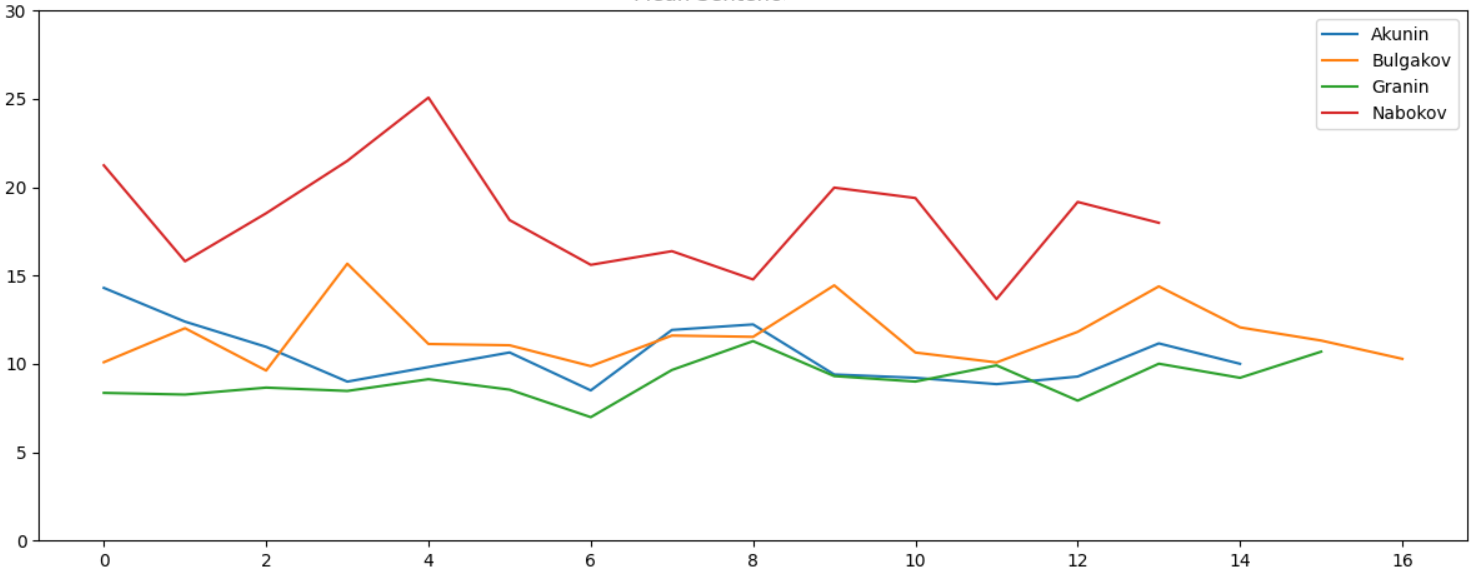
, , , . - , :
, , , , , , , , , , , , , , , , .
1000 , - , , :
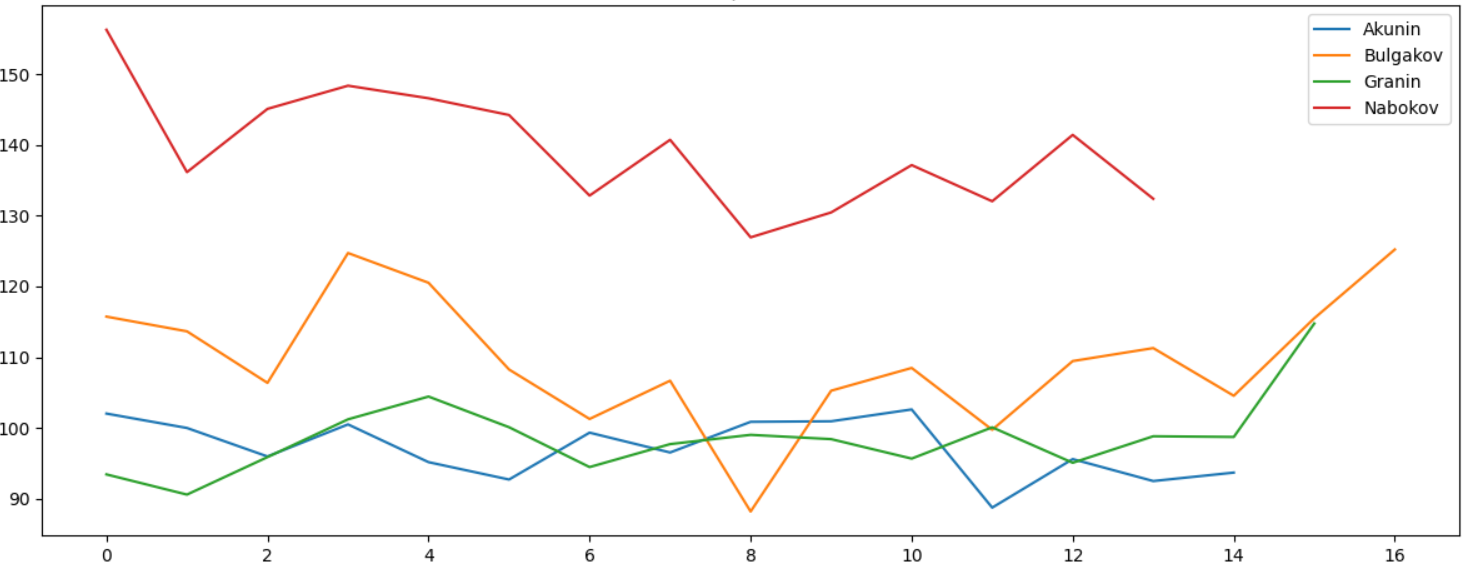
, , , , ":":

, :
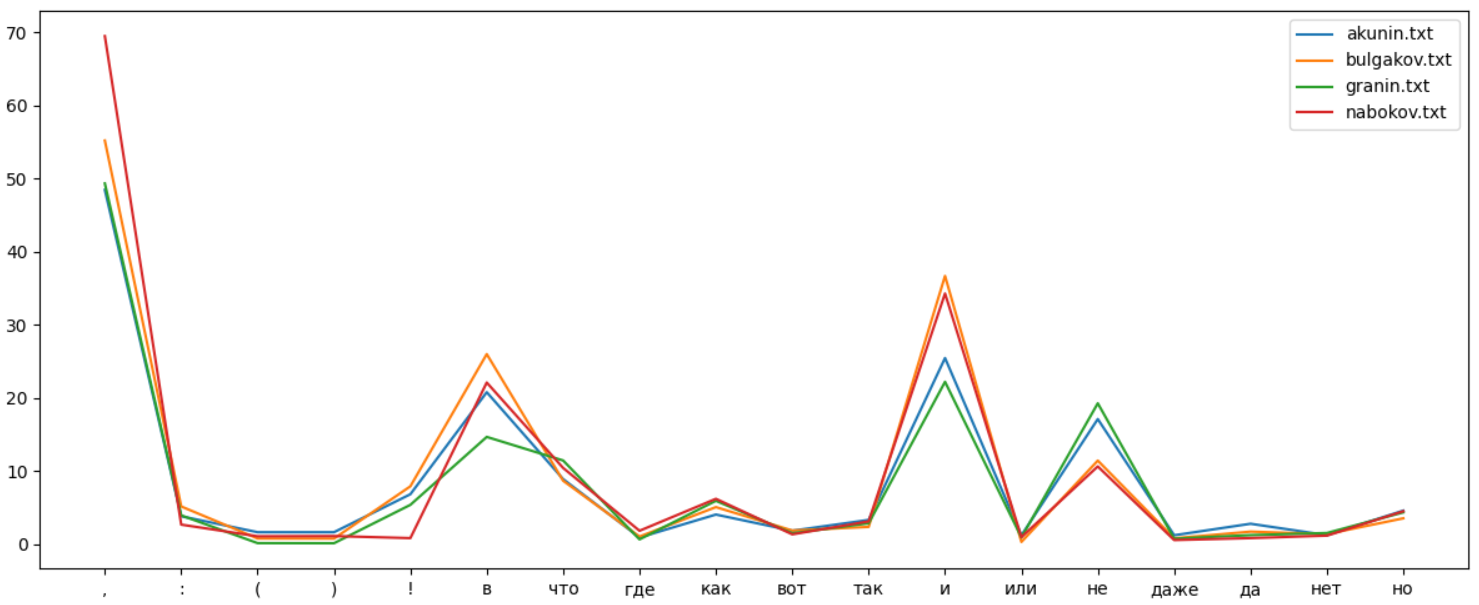
, . , :
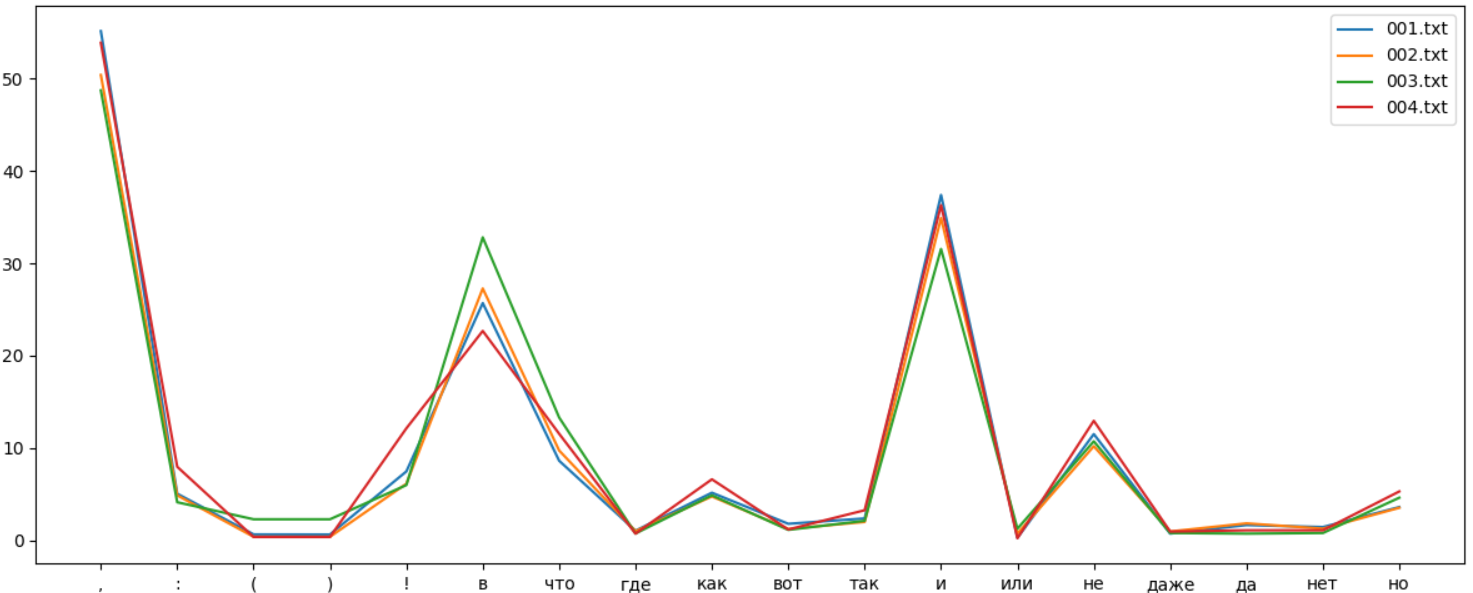
, , . "" , , . , , .
. " " , . Lexical Diversity. , :
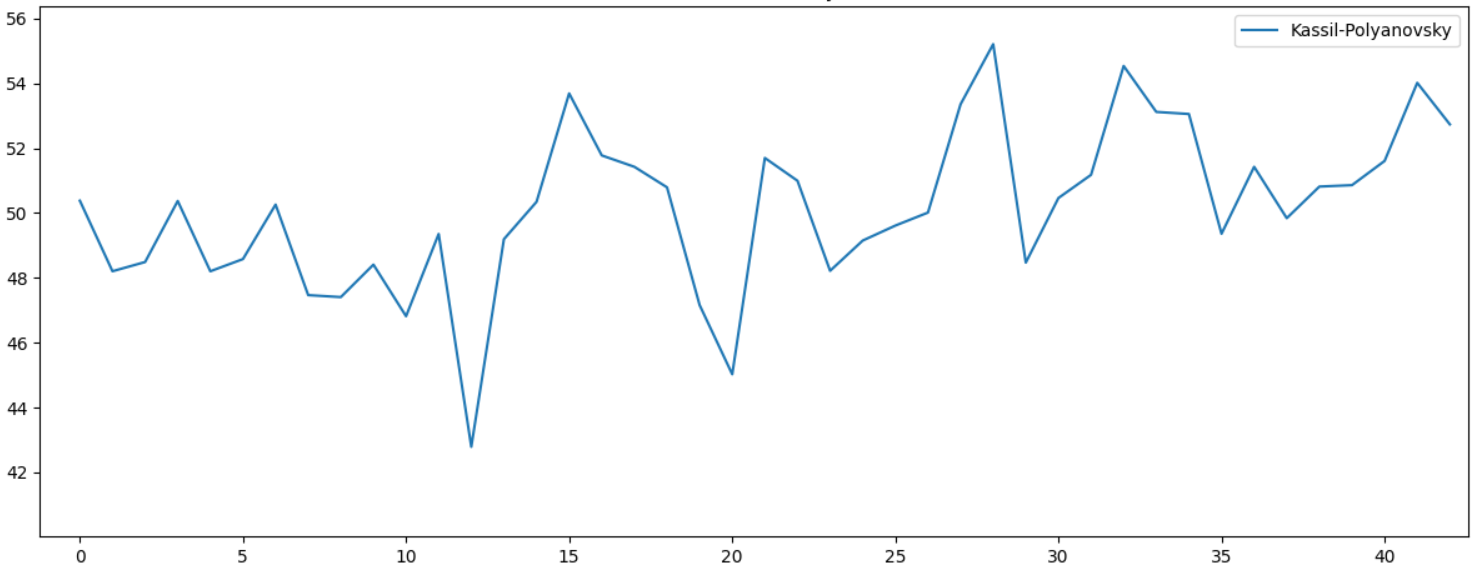
, . 10 , . , . , - , :
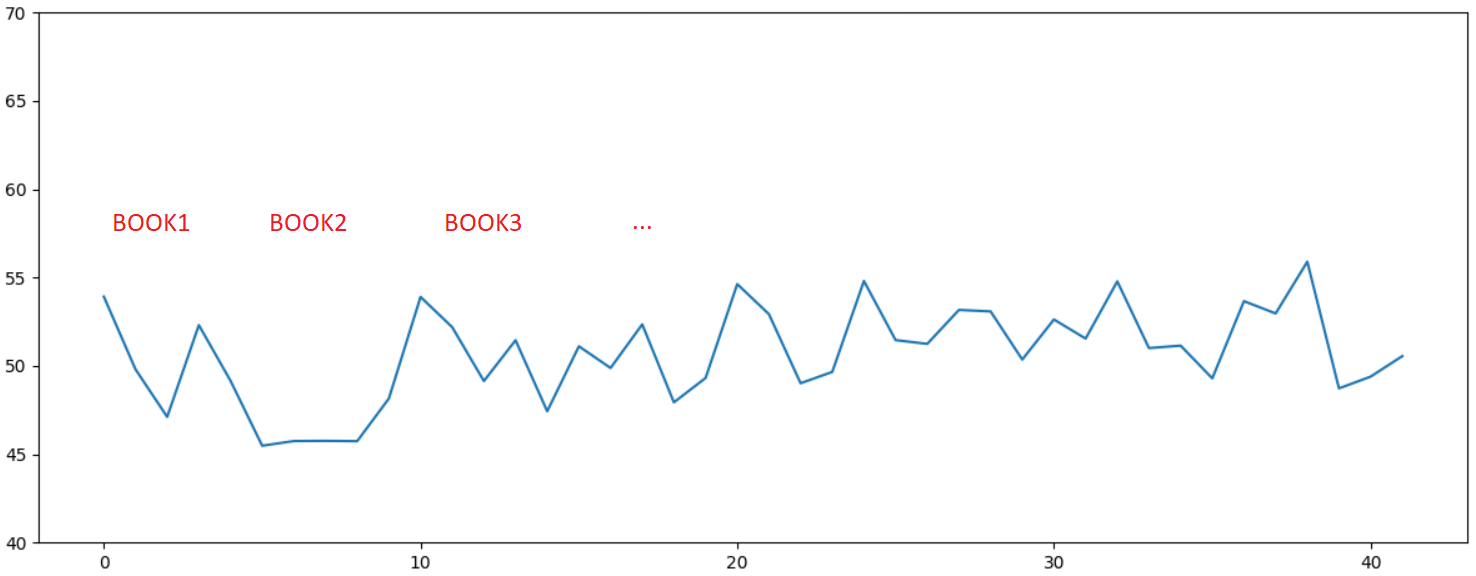
, , , , ...
. , , , .
, Python 3.7 .
text_process.py
import nltk, codecs
import numpy as np
import pandas as pd
import matplotlib.pyplot as plt
from typing import Optional, List
import string
import glob
import sys, os
def get_articles_from_blob(folder: str):
data = []
for path in glob.glob(folder + os.sep + "*"):
print(path)
data += get_articles_from_folder(path)
return data
def get_articles_from_folder(folder: str):
data = []
for path in glob.glob(folder + os.sep + "*.txt"):
data += get_data_from_file(path)
return [(folder.split(os.sep)[-1], data)]
def get_data_from_file(file_name: str):
print("Get data for %s" % file_name)
try:
doc = codecs.open(file_name, 'r', 'cp1251').read()
except:
doc = codecs.open(file_name, 'r', 'utf-8').read()
chunk_size = 25000
data = []
for part in [doc[i:i+chunk_size] for i in range(0, len(doc) - (len(doc) % chunk_size), chunk_size)]:
data.append(get_data_from_str(part[part.find(' '):part.rfind(' ')]))
return data
def get_data_from_str(doc: str):
tokens = nltk.word_tokenize(doc)
remove_punctuation = str.maketrans('', '', string.punctuation)
tokens_ = [x for x in [t.translate(remove_punctuation).lower() for t in tokens] if len(x) > 0]
text = nltk.Text(tokens_)
lexical_diversity = (len(set(text)) / len(text)) * 100
words = set(tokens_)
word_chars = [len(word) for word in words]
mean_word_len = sum(word_chars) / float(len(word_chars))
sentences = nltk.sent_tokenize(doc)
sentence_word_length = [len(sent.split()) for sent in sentences]
mean_sentence_len = np.mean(sentence_word_length)
fdist = nltk.probability.FreqDist(nltk.Text(tokens))
commas_per_thousand = (fdist[","] * 1000) / fdist.N()
return (lexical_diversity, mean_word_len, mean_sentence_len, commas_per_thousand)
def plot_data(data):
plt.rcParams["figure.figsize"] = (12, 5)
fig, ax = plt.subplots()
plt.title('Lexical diversity')
for author, author_data in data:
plt.plot(list(map(lambda val: val[0], author_data)), label=author)
plt.ylim([40, 70])
# plt.title('Mean Word Length')
# for author, author_data in data:
# plt.plot(list(map(lambda val: val[1], author_data)), label=author)
# plt.ylim([4, 8])
# plt.title('Mean Sentence Length')
# for author, author_data in data:
# plt.plot(list(map(lambda val: val[2], author_data)), label=author)
# plt.ylim([0, 30])
# plt.title("Commas per thousand")
# for author, author_data in data:
# plt.plot(list(map(lambda val: val[3], author_data)), label=author)
plt.legend(loc='upper right')
plt.tight_layout()
plt.show()
def get_freqs_from_folder(folder: str):
freqs_data = []
for path in glob.glob(folder + os.sep + "*.txt"):
print("Get data for %s" % path)
try:
doc = codecs.open(path, 'r', 'cp1251').read()
except:
doc = codecs.open(path, 'r', 'utf-8').read()
symbols, freqs = get_freqs_from_str(doc)
freqs_data.append((path.split(os.sep)[-1], symbols, freqs))
return freqs_data
def get_freqs_from_str(doc: str):
tokens = nltk.word_tokenize(doc)
tokens = [x for x in [t.lower() for t in tokens]]
fdist = nltk.probability.FreqDist(nltk.Text(tokens))
symbols = [",", ":", "(", ")", "!", "", "", "", "", "", "", "", "", "", "", "", "", ""]
freqs = []
for s in symbols:
freq = (fdist[s] * 1000) / fdist.N()
if s == ",":
freq /= 2
freqs.append(freq)
return (symbols, freqs)
def plot_freqs(data):
plt.rcParams["figure.figsize"] = (12, 5)
for author, symbols, freqs in data:
plt.plot(symbols, freqs, label=author)
plt.legend(loc='upper right')
plt.tight_layout()
plt.show()
if __name__ == "__main__":
# Download punkt tokenizer
try:
nltk.data.find('tokenizers/punkt')
except LookupError:
nltk.download('punkt')
# Process text files
# data = get_articles_from_blob("Folder") # Folder/AuthorXX/Text.txt
data = get_articles_from_folder("folder_here") # Folder with files
plot_data(data)
# Process frequency curve
data = get_freqs_from_folder("folder_here")
plot_freqs(data)